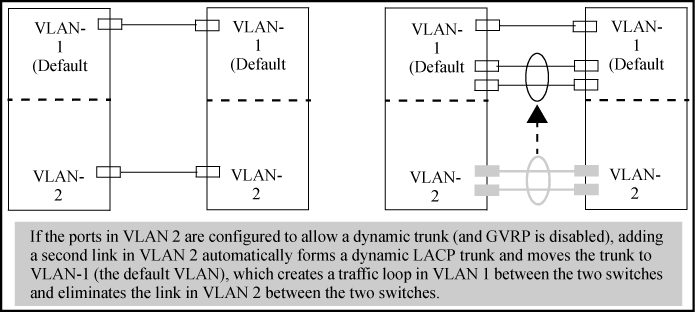Blocked ports with older devices
Some older devices are limited to four ports in a trunk. When eight LACP-enabled ports are connected to one of these older devices, four ports connect, but the other four ports are blocked. The LACP status of the blocked ports is shown as "Failure."
If one of the other ports becomes disabled, a blocked port replaces it (Port Status becomes "Up"). When the other port becomes active again, the replacement port goes back to blocked (Port Status is "Blocked"). It can take a few seconds for the switch to discover the current status of the ports.
Blocked ports with LACP
switch(eth-B1-B8)# show lacp
LACP
PORT LACP TRUNK PORT LACP LACP
NUMB ENABLED GROUP STATUS PARTNER STATUS
---- ------- ------ ------ ------- ------
B1 Active Dyn1 Up Yes Success
B2 Active Dyn1 Up Yes Success
B3 Active Dyn1 Up Yes Success
B4 Active Dyn1 Up Yes Success
B5 Active Dyn1 Blocked Yes Failure
B6 Active Dyn1 Blocked Yes Failure
B7 Active B7 Down No Success
B8 Active B8 Down No Success
If there are ports that you do not want on the default VLAN, ensure that they cannot become dynamic LACP trunk members. Otherwise a traffic loop can unexpectedly occur. For Example:

Easy control methods include either disabling LACP on the selected ports or configuring them to operate in static LACP trunks.